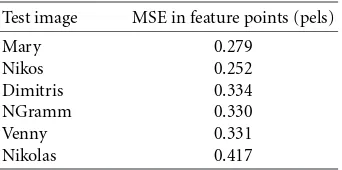Three Dimensional Facial Adaptation for MPEG 4 Talking Heads
Full text
Figure



Related documents
In addition, a file may be bypassed during the running of the program under sense switch control (SSe). A continuous field up to 30 characters in length may be
The end-of-reel indicator (EOR) turns on in the system processing unit if a tape mark is read by the system or if a reflective spot is sensed during a write
A LTORG statement directs the assembler to begin as- signing storage locations to literals, address con- stants, and closed library routines (see Macro Sys- tem),
4.4 Frequency domain depiction of proposed cubic term generator internal bandwidth lim- itation.. 4.5 Frequency translation of bandpass noise by multiple blocker signals to
It contains these main sections: a description of the Basic 4K RPG deck, the control card, the input deck, operating instructions for generating as well as
The address to which the user must return after processing his routine specified by the DTF OVERFLOW entry. The address to which the user may return after processing
Large programs can be segmented into several phases, or overlays. Each phase must consist of a main pro- gram and any required subprograms. Each phase is given a
This condition is that if a 1401 RPG calculation specification card (in the source program being translated) contains a position- adjust entry greater than 05 (columns